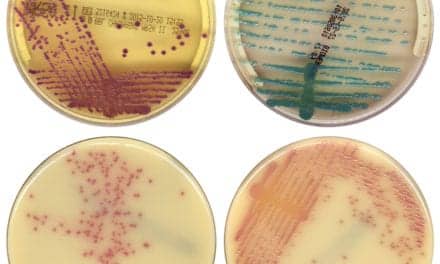The recent emergence of bacterial infections that are resistant to many existing antibiotics is driving an urgent need for tools to quickly identify the small number of therapies that are still effective for individual patients.
Currently, multidrug-resistant bacteria often must be sent to specialized laboratories for analysis, leading to several days of delay before results can guide therapy. Now, investigators at Beth Israel Deaconess Medical Center (BIDMC) have developed a simple and versatile method using inkjet printing technology to test such bacteria for susceptibility to antibiotics in a clinical setting. The method, already available online, is described in the September issue of the Journal of Clinical Microbiology.1
In current practice, when a patient is thought to have an infection, clinicians initially make an educated guess at identifying the causative organism and prescribing an empiric antimicrobial therapy. Meanwhile, they also culture a specimen from the patient, in order to positively identify the bacteria present and to test its susceptibility to different antibiotics. The results of such susceptibility testing enable physicians to select drugs that are known to be effective against the identified organism—a process known as known as “directed therapy.” However, multidrug-resistant pathogens that no longer respond to commonly used antibiotics must often be sent offsite, to laboratories where technically complex testing methods help determine the best course of treatment.
“The time between starting empiric therapy and starting directed therapy is what we in my laboratory call the antimicrobial testing gap,” says James Kirby, MD, director of the clinical microbiology laboratory at BIDMC and associate professor of pathology at Harvard Medical School. “If a doctor’s initial guess is good, patients generally do well. Physicians’ initial predictions used to be very good because the susceptibility of our pathogens was predictable. However, with the emergence of multidrug resistance, our instincts are increasingly wrong.”
Kirby’s lab has been working to reduce the antimicrobial testing gap so that doctors can start patients on directed therapy as soon as possible. The researchers have applied and validated a novel technology that uses inkjet printer technology to perform tests as accurate as those done at specialized laboratories.
Specialized laboratories conduct the current gold standard diagnostic test, known as a microdilution susceptibility test. It requires dozens of steps, a complex set of supplies, and significant time. In their modified method, Kirby and his team used an inkjet printer to print out droplets of antimicrobial compound, with the printed drops varying in size up to a million-fold.
“With this technology, the assay can be set up in a minute or so, and testing multiple drugs for multiple patients requires minimal additional effort,” says first author Kenneth Smith, PhD, a postdoctoral fellow at BIDMC.
In side-by-side comparisons with the gold standard microdilution susceptibility method, the digital dispensing method was just as accurate. However, the digital dispensing method demonstrated significantly greater reproducibility (precision) than the current gold standard—meaning that repeated use of digital dispensing testing is likely to yield correct results more consistently.
“We believe that our methodology will bring testing for multidrug-resistant pathogens back into clinical laboratories at the site of patient care,” says Smith. “Testing at the site of patient care will significantly decrease the antimicrobial testing gap and allow therapy to be directed in a timely fashion against multidrug resistant pathogens.”
Use of the new method may also encourage quicker uptake of new drugs targeted at the resistant organisms now on the rise, says Kirby. In the past, he notes, hospitals have often been slow to adopt the use of new antimicrobial drugs, in part because their laboratories cannot test for susceptibility to these agents. Because only specialized laboratories can test for such susceptibility, infections play out before physicians can use the drugs confidently. “We believe that our application of digital dispensing technology will now make these new antibiotics available for patients, and encourage the development and appropriate use of new antimicrobials,” he says.
For more information, visit Beth Israel Deaconess Medical Center.
REFERENCE
- Smith KP, Kirby JE. Verification of an automated, digital dispensing platform for at-will broth microdilution antimicrobial susceptibility testing. J Clin Microbiol. Posted online 22 June 2016; doi: 10.1128/jcm.00932-16.






